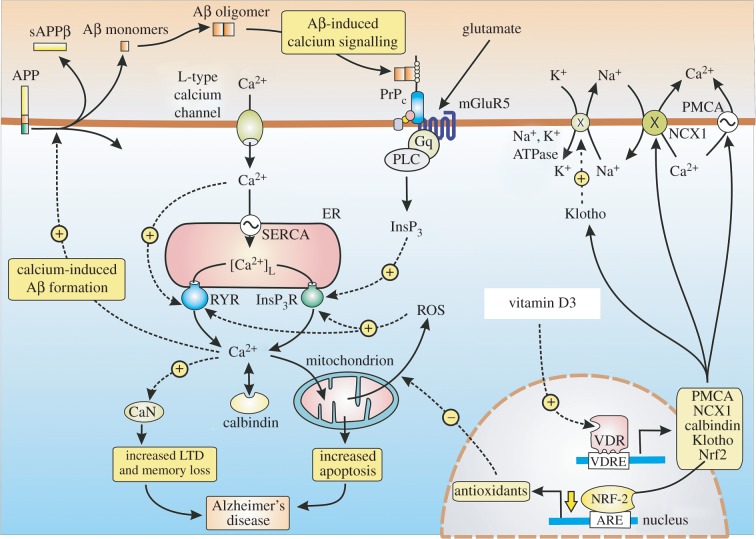Figure 4.
Dysregulation of Ca2+ and redox signalling in Alzheimer's disease (AD). The calcium hypothesis of AD suggests that the formation of Aβ oligomers brings about an overall increase in Ca2+ signalling that results in a permanent elevation in the resting level of Ca2+ to 300 nM that then erases memories soon after they are formed by activating calcineurin (CaN) inducing long-term depression (LTD). An elevation of Ca2+ sets up a positive feedback loop by acting to stimulate the hydrolysis of the amyloid precursor protein (APP) to generate the Aβ oligomers that bind to the cellular prion protein (PrPC) that then activates the InsP3/Ca2+ signalling pathway. Vitamin D reduces the risk of AD by acting to maintain Ca2+ and redox signalling at their normal low resting levels.

